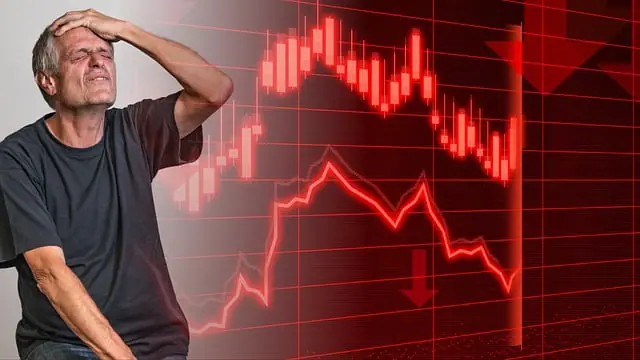The recent market downturn, triggered by the U.S. administration’s decision to implement sweeping tariffs on all imports, has sent shockwaves through global financial markets.
This aggressive move, coupled with retaliatory actions from other nations, particularly China, has led to widespread uncertainty about the future of global trade, economic growth, and corporate profits.
For investors, this situation creates a volatile environment where market swings, sector-specific challenges, and potential recession risks are top of mind.
In times like these, it’s essential to understand what the immediate future might hold for the markets and how different sectors could be impacted.
1. Increased Volatility
Expect heightened market fluctuations in the short term. Tariffs and trade wars can cause emotional reactions in the markets, leading to more swings.
Investors may see days of sharp declines followed by partial recoveries as sentiment shifts rapidly. This volatility could continue for weeks or even months, depending on how events unfold.
2. Sector-Specific Impacts
Certain sectors will feel the brunt of the tariffs:
- Technology & Manufacturing: Companies that rely on international supply chains for raw materials or that sell significant portions of their goods abroad could face pressure. The tech sector might be especially vulnerable due to trade restrictions with China and other partners.
- Consumer Goods: If tariffs increase costs for U.S. manufacturers, those costs may be passed on to consumers in the form of higher prices. This could dampen consumer spending, further impacting companies reliant on domestic sales.
- Energy: Energy companies may experience increased uncertainty due to the interconnected nature of global trade, particularly if tariffs affect oil and gas exports/imports.
Eyes On Renewable Energy
On a more positive note, solar energy and renewable energy sectors could see increased demand and investment during this period of market volatility.
Governments and investors are increasingly looking to clean energy as a safe haven or growth sector amidst broader economic instability.
Tariffs on traditional energy (like fossil fuels) or increased pressure on global energy markets might spur more investment in renewable energy sources as an alternative.
Additionally, some global trade conflicts, like tariffs, can push countries to ramp up domestic clean energy projects to avoid relying too heavily on foreign imports, which could directly benefit solar manufacturers and green technology.
The Biden administration’s focus on clean energy as a key part of economic growth and job creation could continue to provide a tailwind for the sector. As long as the administration maintains favorable policies for clean energy investment, this sector may prove resilient during broader market downturns.
On the flip side, some defensive sectors (like utilities, healthcare, and consumer staples) might hold up better, as people continue to need those goods and services regardless of the economic climate.
>> Related article: Is SolarBank (NASDAQ: SUUN) The Next Short Squeeze?
3. Potential Recession Risks
This tariff war risks pushing the U.S. economy toward a slowdown or even a recession, depending on how long the tariffs are in place and the extent of the retaliations. If global trade volumes decrease significantly and inflation rises due to the tariffs, this could lead to lower economic growth.
- Inflation: Higher prices due to tariffs could affect consumers and lower purchasing power, putting additional strain on the economy.
- Interest Rates: The Federal Reserve may lower interest rates to mitigate the economic impact, but that depends on the inflation outlook and broader economic data. If the Fed cuts rates, it could help support asset prices and credit availability.
4. Corporate Earnings Pressure
With the increased cost of doing business (from tariffs), corporate profits may be hit, particularly in sectors with high exposure to international markets. As earnings reports start reflecting the impacts of these tariffs, we might see more downgrades to earnings expectations.
5. Global Impact & Spillover Effects
The global nature of trade means that other countries’ economies will be impacted too. If the U.S. remains isolated in its economic policies, this could lead to a slowdown in global economic growth, which would dampen demand for U.S. exports and affect markets worldwide.
6. Government Response and Negotiations
Expect heightened political drama as the U.S. government tries to manage the situation. The U.S. may push for negotiations with other countries to reduce tariffs or find a middle ground. The longer these trade tensions drag on, the more investors may brace for a sustained dip.
7. Investor Sentiment & Market Corrections
At some point, the market might enter a correction phase, defined by a 10% or greater drop from recent highs. This can lead to a revaluation of stock prices, with investors rethinking risk. Those who are in for the long term may see this as an opportunity to buy at lower prices, while others may seek safer, less volatile assets (e.g., bonds, cash, or gold).
8. Long-Term Outlook
If the tariffs are temporary or a middle ground is found between the U.S. and its trading partners, a market recovery could follow, driven by renewed trade optimism. However, if the situation worsens and the tariffs become permanent, the market may experience a prolonged downturn.
Long-term investors who are prepared for a “bumpy” ride may still benefit from purchasing undervalued stocks, assuming they believe the global economy will eventually stabilize.
Actionable Steps for Investors:
- Diversification: If you haven’t already, it might be time to look at broadening your portfolio with defensive stocks or international exposure to mitigate U.S.-specific risk. Also consider adding renewable energy stocks or ETFs focused on clean energy as a long-term play.
- Hedging: Investors with more risk tolerance might consider hedging with options or other instruments to protect against downside risk.
- Stay Informed: Keep an eye on the news, especially updates from the U.S. administration, the Fed, and key economic indicators. The situation is fluid, and new developments can shift market sentiment quickly.
Overall, the outlook is uncertain, but it’s clear that the market will likely experience significant turbulence in the near term.
There are opportunities for investors who are prepared for volatility, but caution is key, especially in the face of a potential prolonged trade war.




